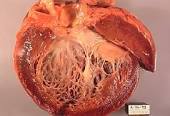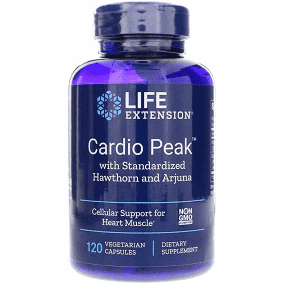
Diagnosed with Cancer? Your two greatest challenges are understanding cancer and understanding possible side effects from chemo and radiation. Knowledge is Power!
Learn about conventional, complementary, and integrative therapies.
Dealing with treatment side effects? Learn about evidence-based therapies to alleviate your symptoms.
Click the orange button to the right to learn more.
- You are here:
- Home »
- Blog »
- Healthy Living Products »
- Cardiotoxic, Cardiomyopathy, Hypertension
Cardiotoxic, Cardiomyopathy, Hypertension

“Cardiotoxic treatment refers to the damage of heart muscles (cardiomyopathy) due to intake of chemotherapy drugs.”
It isn’t the fact that many chemotherapy regimens are cardiot0xic aka cause damage to the heart. To me, it was the fact that I developed chemotherapy-induced cardiomyopathy (CIC) 15 years after I underwent a mix of cardiotoxic chemo regimens including
- melphalan,
- busulphan,
- cytoxan and
- adiamycin.
My heart flipped into chronic atrial fibrillation (A Fib) after 50 years of normal heart health. Understand that cardiotoxic chemo drugs can cause several different problems with your heart including:
- Cardiomyopathy
- Atrial fibrillation
- chemo-induced hypertension
If you have undergone a long and growing list of cardiotoxic chemo regimens you may finish your initial therapy, reach cancer-free status, only to die of CIC years after your treatment. This almost happened to me…
If you are about to undergo a cardiotoxic chemo or if you underwent chemotherapy recently, I encourage you to consider evidence-based but non-toxic therapies shown to reduce your risk of CIC as well as reduce hypertension caused by chemotherapy. See the studies linked below.
As you can imagine from my venting above, for years now I have looked down on any/all toxic therapy. Even FDA approved heart therapy drugs.
When I went to see a cardiologist after slipping into A Fib back in 2010, I was told to take a common heart therapy called metoprolol. I tried that therapy for two days, experienced fatigue and difficulty breathing and
- decided to research non-toxic therapies to help me
- stop taking metoprolol
Long-story short, I supplement with Arjuna and Hawthorn- Life Extension Cardio Peak, I exercise frequently (but moderately), I don’t drink alcohol much anymore and I’ve changed my diet to a much more heart healthy one.
My ejection-fraction has increased from 40-45 to 50-55 and I’ve reduced my blood pressure by about 10 points (both systolic and diastolic).
For the record, it seems logical for people reading this post to talk to their cardiologist about taking an integrative approach to managing their heart and BP. By an integrative approach, I’m talking about a low dose of a drug like metoprolol with moderate exercise, nutrition, nutritional supplementation, etc. Ask your cardiologist.
My point is that there are a remarkable number of non-toxic therapies out their that can lower your BP, and improve your heart function. Therapies that my cardiologist never discussed with me.
To Learn More about Chemotherapy-induced Hypertension- click now
If you would like to learn more about cardiomyopathy, cardiotoxic therapies, hypertension, etc, scroll down the page, post a question or a comment and I will reply to you ASAP.
Thank you,
David Emerson
- MM Survivor
- MM Cancer Coach
- Director PeopleBeatingCancer
Recommended Reading-
- Multiple Myeloma Side Effects- Chemo & Blood Clot (VTE) Prevention
- Multiple Myeloma Side Effects- Acupuncture For Pain
- Caregiving the Multiple Myeloma Survivor w/ PTSD
Hypertension in Patients with Cancer
“There is a known association between (cardiotoxic) chemotherapy and radiotherapy for treatment of cancer patients and development or worsening of hypertension. The aim of this article is to review this association. A literature search was conducted for articles reporting this association on the databases PubMed, SciELO and LILACS between 1993 and 2013…
We also described the relationship between hypertension and carotid baroreceptor injury secondary to cervical radiotherapy.
Morbidity and mortality increased in patients with cancer and hypertension without proper antihypertensive treatment. We concluded that there is need for early diagnosis, effective monitoring and treatment strategies for hypertension in cancer patients in order to reduce cardiovascular morbidity and mortality.
Cancer Therapy-Related Cardiac Dysfunction: An Overview for the Clinician
“Cancer therapy-related cardiac dysfunction (CTRCD) is one of the most feared and undesirable side effects of chemotherapy, occurring in approximately 10% of the patients. It can be classified as direct (dose-dependent vs dose-independent) or indirect, either case being potentially permanent or reversible. Risk assessment, recognition, and prevention of CTRCD are crucial…
It is important to emphasize that chemotherapy may also have an indirect effect on the heart while interplaying with various facets of the cardiovascular system (ie HTN, vascular or endothelial damage, and arrhythmias) (Table 2)…
Type 1 cardiotoxicity is characterized by irreversible myocardial damage due to the cumulative administered dose. Anthracyclines are the best representation of this type of cardiotoxicity..
Type 2 cardiotoxicity is characterized by dose-independent reversible myocardial damage, and the best representation of this is trastuzumab…
With the advent of immunotherapy, there is a new set of mechanisms in which patients with cancer may suffer cardiovascular injury and the need for an updated classification…
| Type 1 | Irreversible myocardial damage, dose dependent (ie anthracyclines) |
| Type 2 | Reversible myocardial damage, dose independent (ie trastuzumab) |
| Type 3 | Coronary disease related such as radiation exposure and spasm (ie radiation therapy and 5-FU) |
| Type 4 | Miscellaneous related to myocarditis or takotsubo’s cardiomyopathy (ie 5-FU and TKIs) |
| Type 5 | Indirect which are secondary to conduction abnormalities, arrhythmias, and hypertension (ie ibrutinib, fluorouracil, and platinum-based therapy) |
Chemotherapy Agents Associated with CTRCD
Anthracyclines (eg, doxorubicin, daunorubicin, idarubicin, epirubicin, and mitoxantrone)-
Anthracycline toxicity may be: (1) acute (within 1 week), which is uncommon (approximately 1%), but usually reversible when discontinued; (2) sub-acute (1.6%-2.1%); and (3) chronic (1.6%-5%), which are likely irreversible.24
This classification is controversial as there is possible progression of one phenomenon to another. The most common presentation occurs before 1 year of therapy and carries mortality that exceeds 50%.
Late onset occurs within 1 to 20 years and may also be seen after a second insult. The late onset presentation tends to improve with guideline-directed medical therapy. Overall, 2% to 20% of the patients who receive anthracycline will have a decrease in LVEF.2…
Alkylating agents (eg, cyclophosphamide, ifosfamide, busulfan, mitomycin, and melphalan)…
Platinum-based therapies (eg, cisplatin, carboplatin, and oxaliplatin)…
Proteasome inhibitors (eg, bortezomib and carfilzomib)
Radiation Therapy
Chemotherapy-induced cardiotoxicity treatment market – Global Industry Analysis 2014 – 2018 and Forecast 2019 – 2029
“Chemotherapy-induced cardiotoxicity treatment treatment refers to the damage of heart muscles due to intake of chemotherapy drugs. Due to cardiotoxicity, the heart is not able to pump the blood properly to all the parts of the body. Cardiotoxicity may also lead to cardiomyopathy…
Rapidly increasing prevalence of cancer is the major factor, increasing the growth of chemotherapy-induced cardiotoxicity (cardiomyopathy ) treatment treatment market…
Lack of awareness in some of the emerging regions, is a factor which can hinder the growth of chemotherapy-induced cardiotoxicity treatment treatment market. Poor availability of drugs, can also hinder the growth of chemotherapy-induced cardiotoxicity treatment treatment market…
Based on the drug type, the Chemotherapy-induced cardiotoxicity treatment treatment market has been segmented into
- dexrazoxane hydrochloride,
- ACE inhibitors,
- beta-blockers,
- diuretics,
- digoxin
- and vasodilators…
Revisiting Terminalia arjuna – An Ancient Cardiovascular Drug
“Cardiomyopathy-
In addition to its anti-ischemic property, arjuna was found to reduce LVM and improve LVEF.[59] A recent observational study revealed that when patients of dilated cardiomyopathy with reduced LVEF received arjuna in addition to their standard therapy, there was a significant improvement in left ventricular parameters as well as functional capacity.[60]…
Effect of hawthorn standardized extract on flow mediated dilation in prehypertensive and mildly hypertensive adults: a randomized, controlled cross-over trial
“Hawthorn extract has been used for cardiovascular diseases for centuries. Recent trials have demonstrated its efficacy for the treatment of heart failure, and the results of several small trials suggest it may lower blood pressure…
Other studies of the effect of hawthorn on heart failure also suggest that it may have a BP lowering effect, although BP was a secondary outcome in each of those studies [19,20]. All hawthorn studies to lower BP have had a minimum 10 week intervention period and the German Commission E recommends a minimum of 6 weeks [37].
Even if hawthorn has no effect on NO, it is still worthwhile to investigate the effects of hawthorn on blood pressure given the results of these prior trials…”


